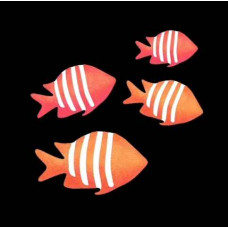From gene and Greek typos, imprint. The totality of all the genes in an individual in a given population. The genotype defines the inheritance of an organism. The set of alleles of a gene or group of genes that control a trait in a given organism (in this case, the unexamined part of the genotype acts as the genotypic environment).
The term "genotype" was proposed by W. Jogapsen in 1909. In modern genetics, the genotype is considered to be a single system of genetic elements interacting at different levels (between alleles of the same gene or different genes).
The genotype controls the development, structure and vital functions of an organism, i.e. the totality of all the characteristics of an organism - its phenotype. Individuals with different genotypes can have the same phenotype, so genetic analysis must be performed to determine an organism's genotype.
Individuals with the same genotype under different conditions may differ in the nature of their traits (especially quantitative traits), i.e. they may differ in phenotype. The genotype thus determines the possible developmental pathways of the organism and its individual traits in interaction with the environment.
Colouration is an example of the influence of the environment on the phenotypic expression of traits.
Genetics uses the concept of response norm - the possible range of phenotypic variability without a change in genotype under the influence of external conditions (the genotype determines the limits of the response norm). Changes in genotype or the presence of individuals with different genotypes is called genotypic variability, which is one of the conditions of the evolutionary process.
The presence of individuals with the same genotype is characteristic of species with asexual reproduction and pure lines.
Genotype is a genetic characteristic (constitution) of a particular organism. When studying the inheritance of certain traits, not all genes are called genotype, but only those that determine these traits. The genotype is not a mechanical sum of autonomous, independently acting genes, but a complex and integral system - a genotypic environment in which the work and realisation of each gene depends on the influence of other genes.
Thus, when allelic genes interact, in addition to simple cases of dominance and recessiveness, incomplete dominance, codominance (simultaneous manifestation of two allelic genes) and overdominance (stronger manifestation of a trait in heterozygotes than in homozygotes) are possible.
When non-allelic genes interact, complementarity (genes complementing each other) and epistasis (one gene being suppressed by another) are possible. These forms of interaction refer to qualitative traits. The degree of development of many quantitative traits depends on the combined action of a number of non-allelic dominant genes. This phenomenon is called polymerisation, and genes acting in one direction are called polymer genes. The reverse phenomenon, where one gene affects the development of several traits, is called pleiotropy.
Underlying all these manifestations of the genotypic environment is the fact that the development of any trait is the result of a series of sequential biochemical reactions, each controlled by a separate gene.
Individuals with the same genotype who develop under different environmental conditions may have different phenotypes. In this context, genetics has developed the concept of the response norm, i.e. the limits within which the phenotype can change under different environmental conditions for a given genotype.
Thus, the range of phenotypic variability is also determined by the genotype, or in other words, the phenotype is the result of the interaction between genotype and environment. Obtaining cells and individuals with the same genotype through vegetative reproduction and cloning is important for solving scientific problems as well as practical tasks in agriculture, medicine and biotechnology.
Genotype
Tags: Genotype

